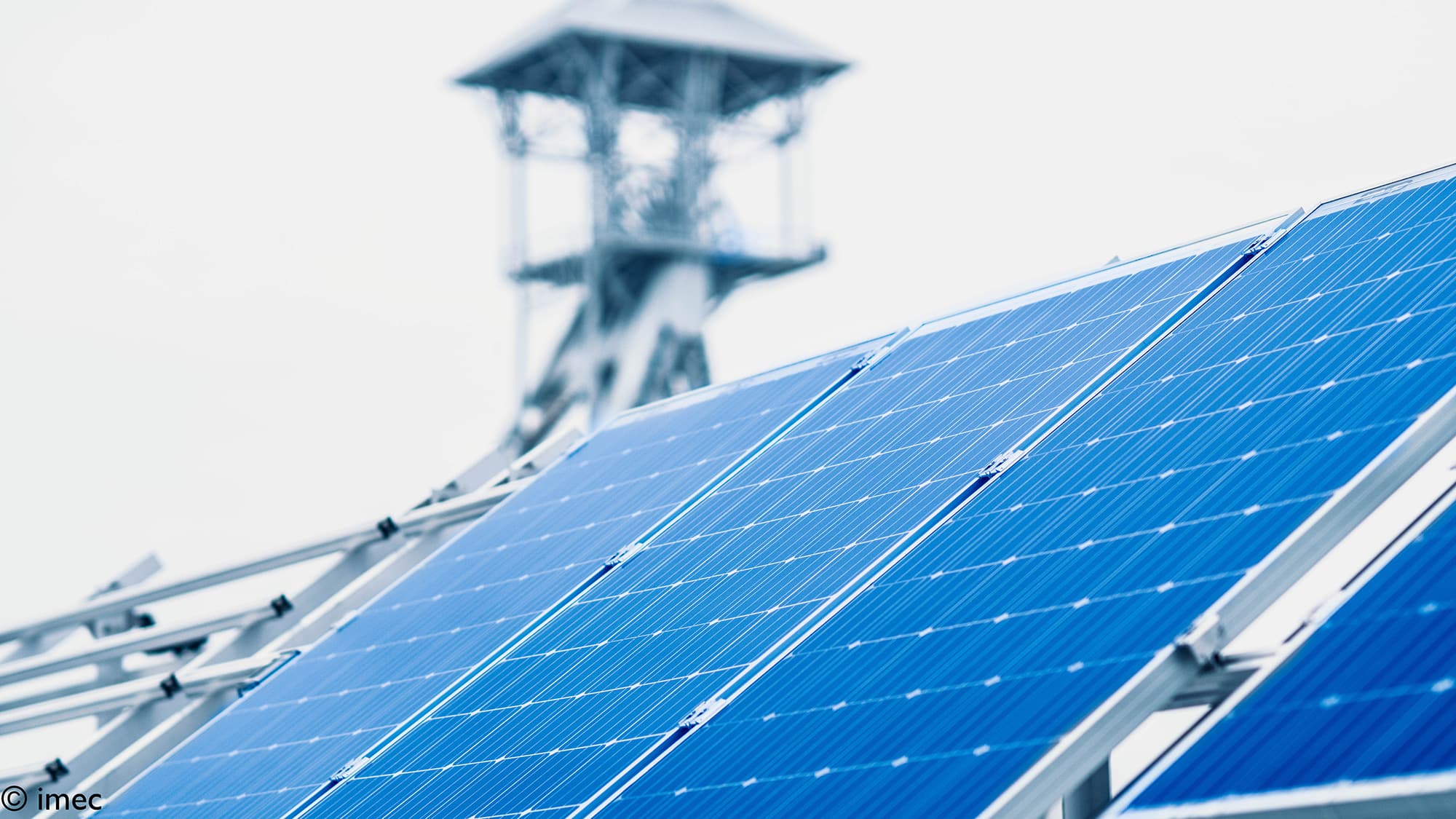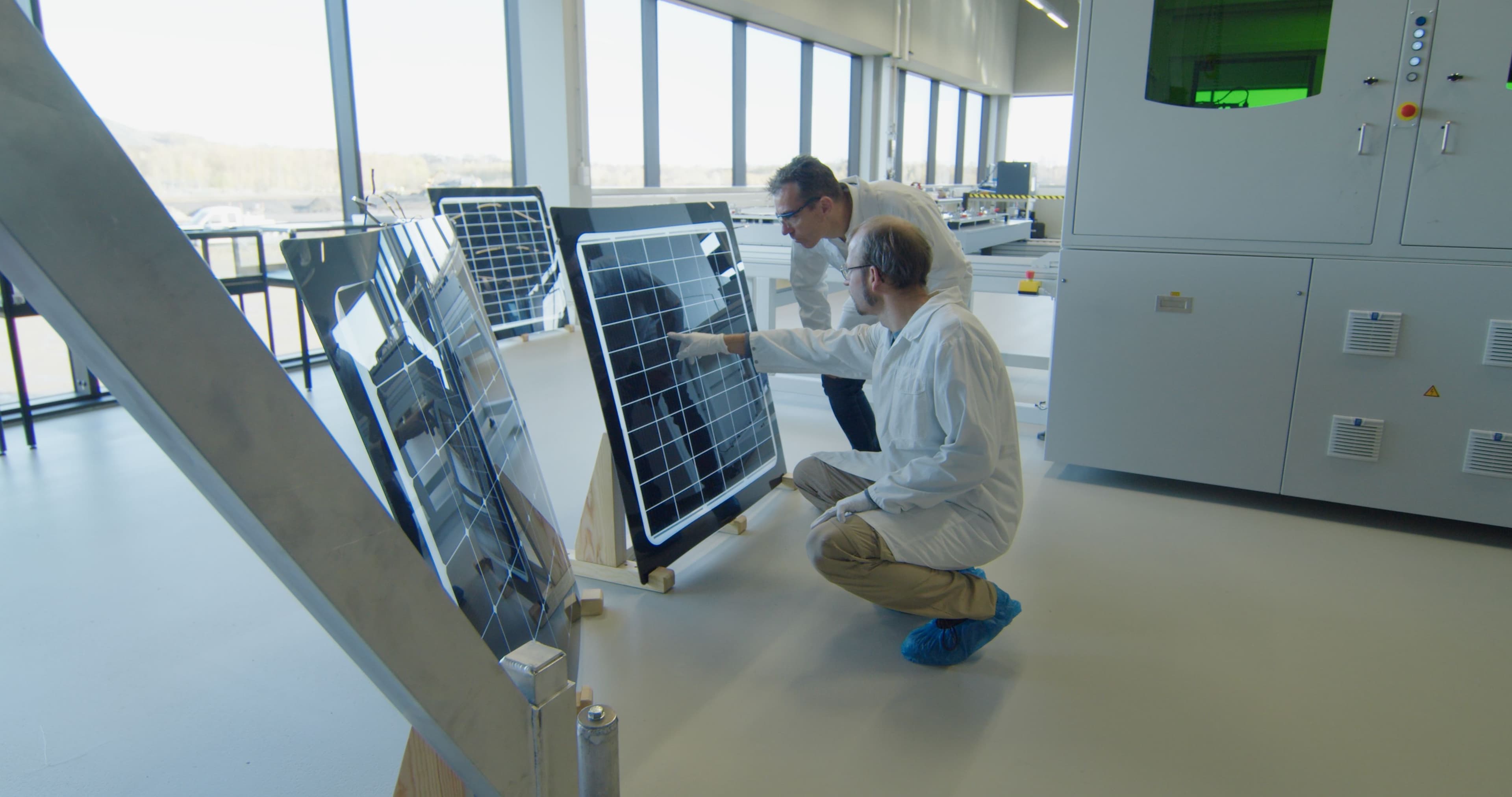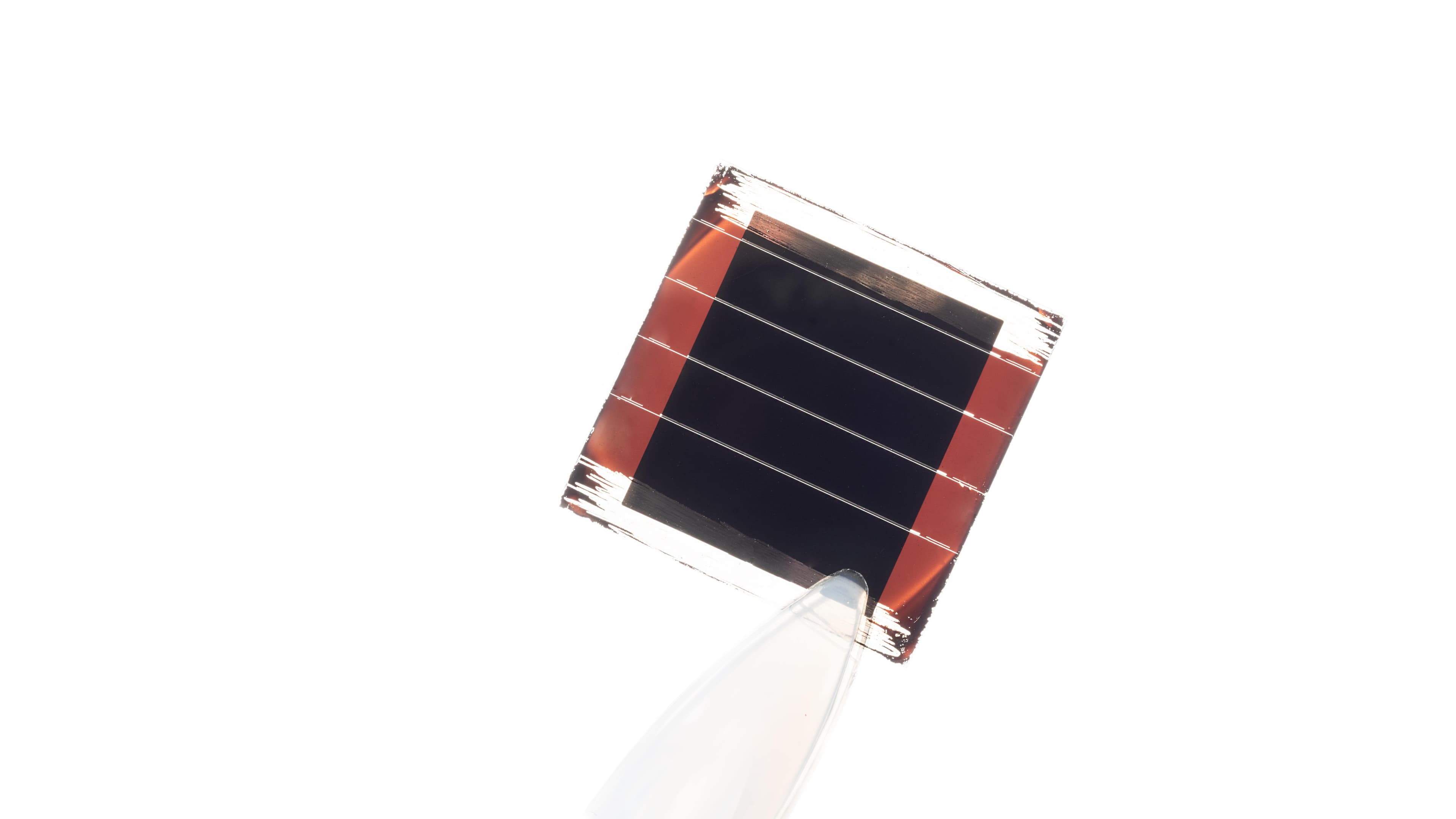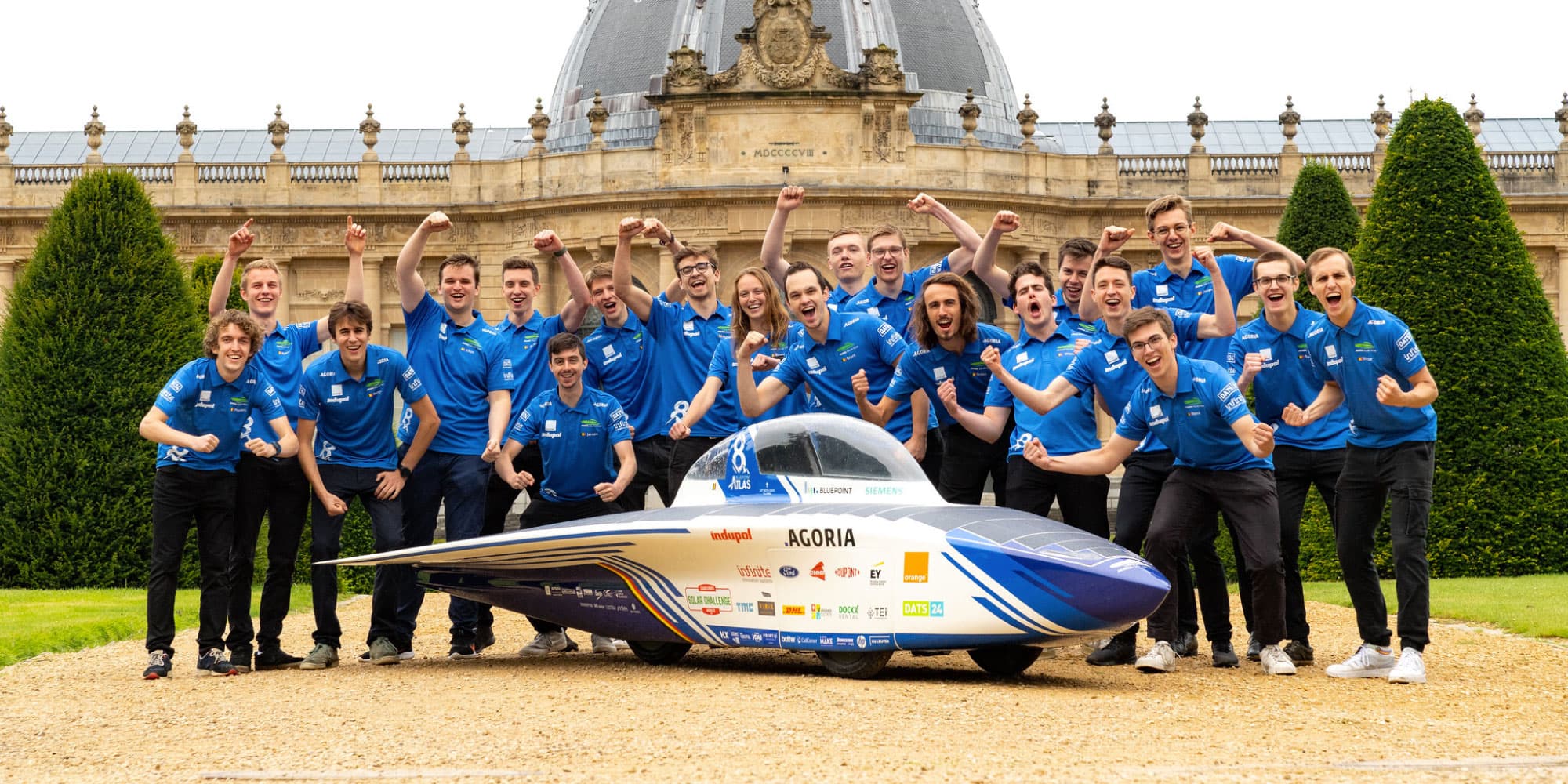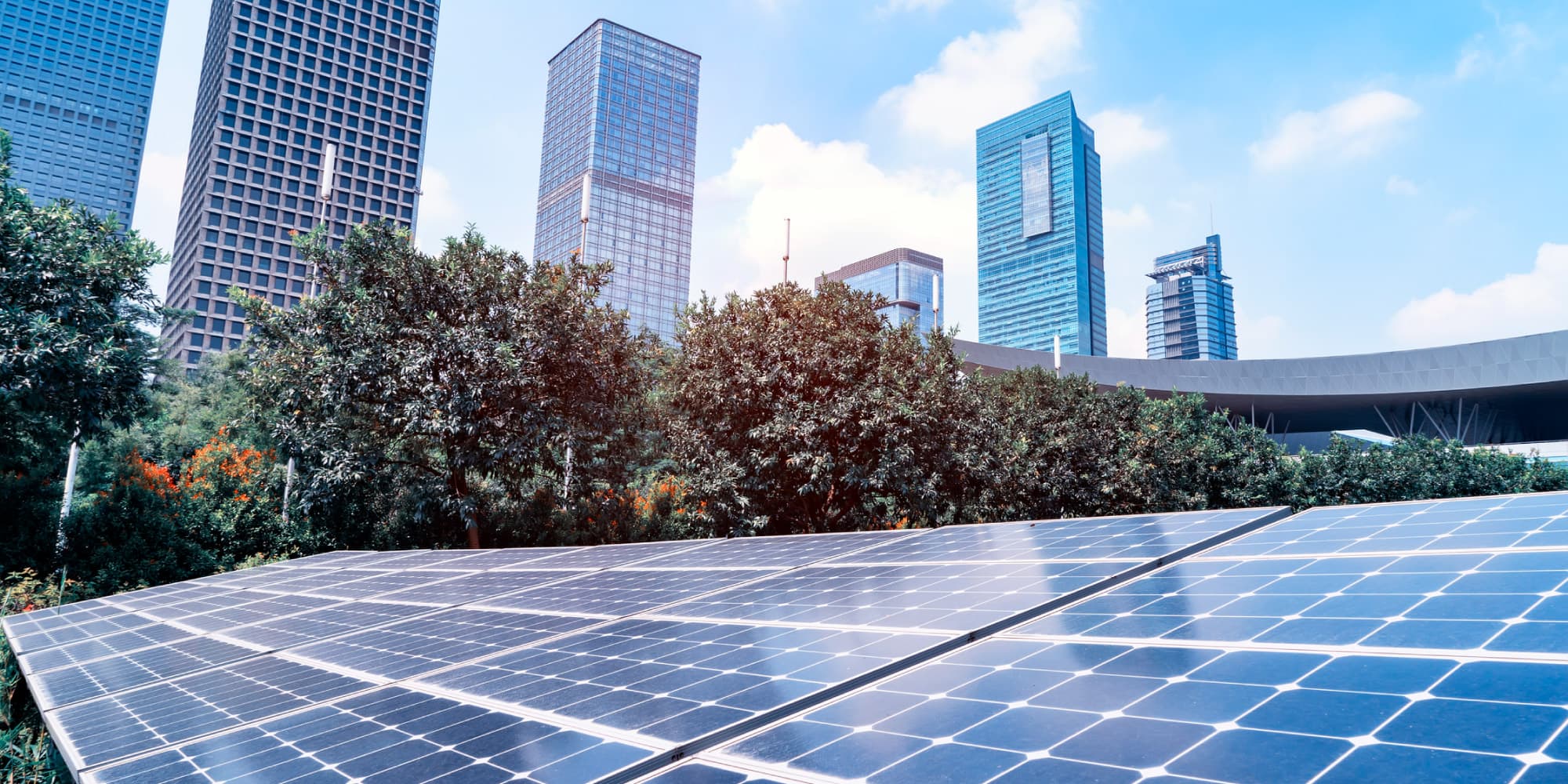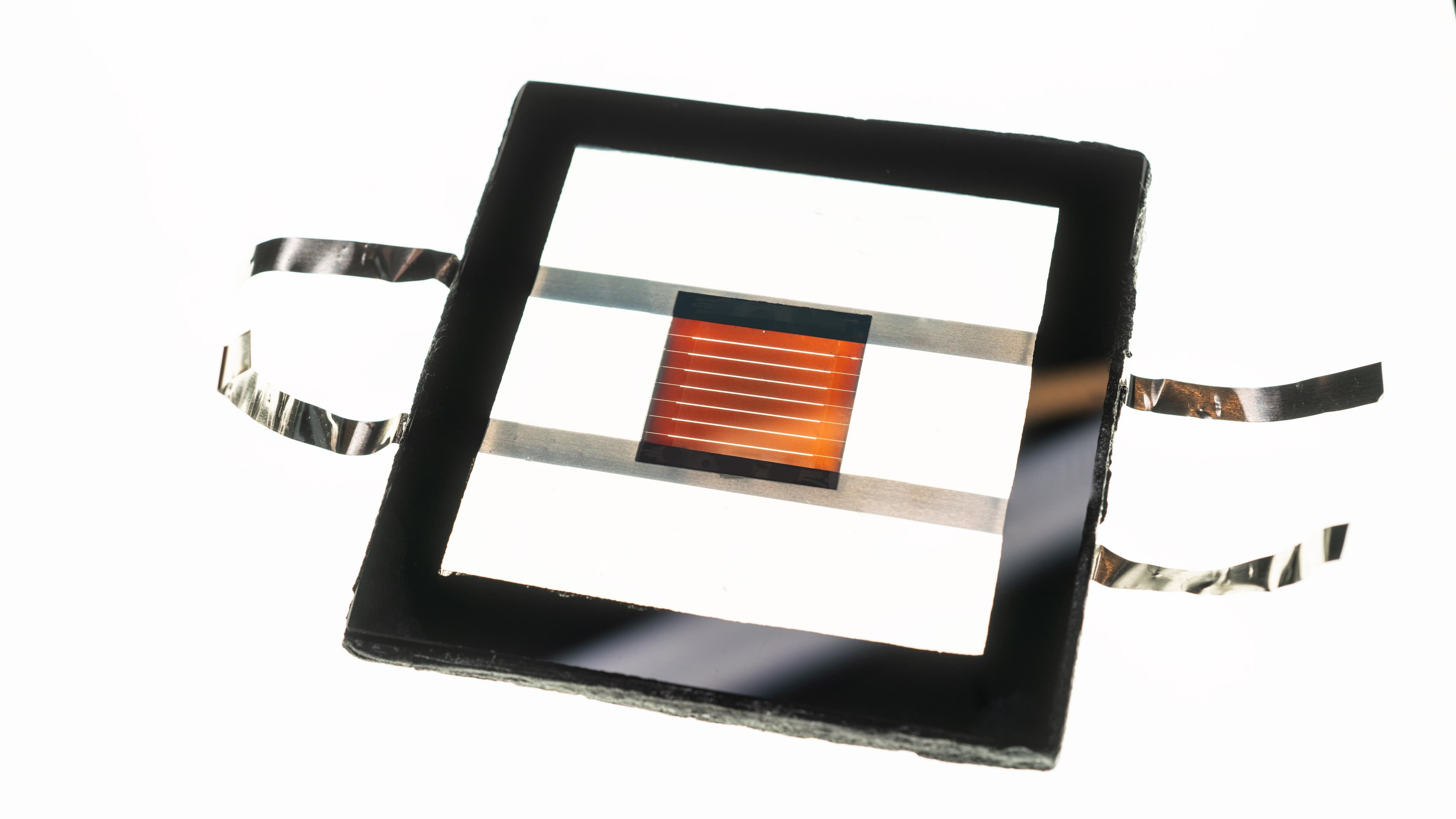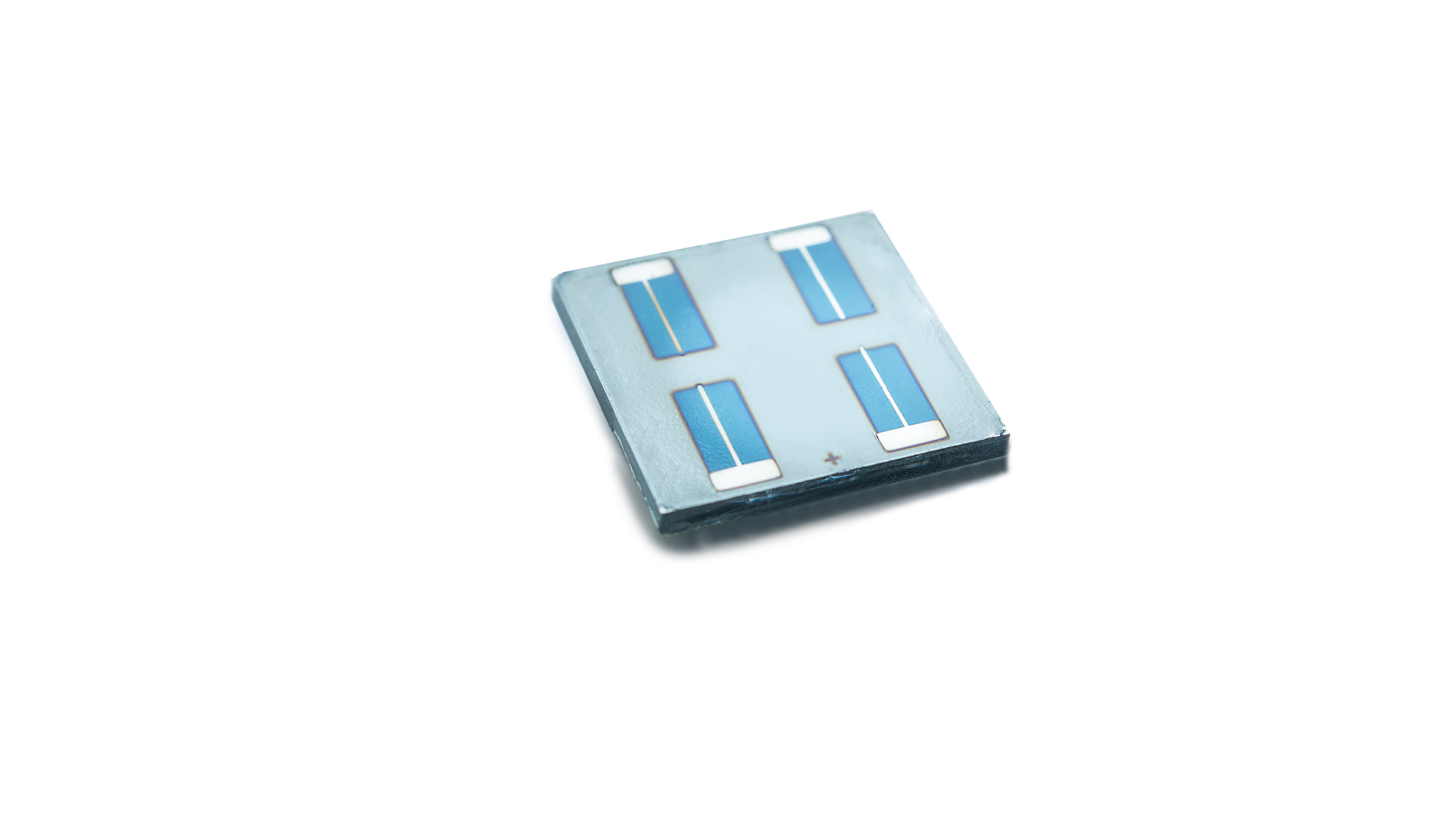“Where silicon still is the most dominant material for photovoltaics (PV) applications, we see much potential for upcoming technologies based on thin-film materials.” Bart Vermang, professor at UHasselt and research leader at imo-imomec, walks us through the focus areas of materials for energy generation and conversion of his own and other teams at imo-imomec.
Bart Vermang: “Two types of materials are at the base of most of what imo-imomec teams do in the energy domain. One is selenides and sulfides, for example, CuInSe2, and the other is perovskites. Without going into the technical details on each of them, their main benefit is that they allow us to make more effective choices and combinations to meet the demands of current and future PV and PV related applications.”
The most straightforward example of such optimizations are tandem solar cells. By stacking a variety of photoelectric materials with different bandgaps, one can take optimal benefit of the solar spectrum and reach higher efficiencies. Bart Vermang: “We can create tandem cells on top of Silicon PV cells to optimize the yield that we can get from traditional installations in solar power plants or on people’s roofs. And if you create tandems from solely thin-film materials, you can further exploit their low weight and flexibility to target additional application areas.”
Integrated PV is one of those areas where thin-film technologies could really add value. Think about PV installations in sound barriers on highways, in buildings (building-integrated PV - BIPV), or even in cars (vehicle integrated PV – VIPV). Looking at cell efficiency, the EU-funded PERCISTAND, coordinated by imec, aims to breach the 30% barrier with thin-film tandem cells. Bart Vermang: “Because of thermodynamic laws, there is a theoretical limit to the conversion efficiency of photoelectric materials. For silicon, this lies at around 32% at room temperature. However, because of practical reasons, this theoretical limit will be impossible to reach. Therefore, the 30% efficiency barrier is widely accepted as an important milestone for alternative PV technologies to start overtaking the Si-dominance. Within the PERCISTAND project, we started with tandem cells with efficiencies of around 25%. We have already reached world-record efficiencies of over 27%. I am quite confident that we will come very close or even surpass the 30% mark before the program ends. At that moment, you will be able to capture a third of the incoming solar light and convert it into electricity. Or: realize a 50% gain compared to the best of PV installations that can now be found on rooftops.”
Aside from increased efficiencies, the R&D focus in the domain mainly lies in increasing the stability of the technologies and areas on which they are deployed. Bart Vermang: “Imo-imomec teams mainly work on the fundamental material properties and smaller-scale demonstrators of sometimes only a few square centimeters. We, therefore, combine practical experiments with advanced modeling tools. Thanks to our strategic partnerships with imec and our participation in EnergyVille, we can assure a smooth handover to those research environments in which the focus is more on cell and module level and on upscaling towards industrial applicability. A good example is the test setup of PV-enhanced sound barriers that is currently being tested at the EnergyVille premises and to which we have contributed.”
Based on the available knowledge portfolio, Bart Vermang sees various opportunities also outside of the more straightforward next-generation PV applications. Bart Vermang: “First of all, thin-film PV has the inherent advantage of being relatively radiation hard. Together with their low weight, this could eventually give them an edge over existing high-efficiency cells being used for space applications. At the moment, we are not yet actively pursuing this trajectory, but we would definitely have the capabilities to do so. Another area in which we are already plugging our knowledge, and in which we also build on the partnerships with imec and EnergyVille, is energy conversion, or “power-to-molecules,” as we call it. For global CO2 production, industry and transport are important contributors. By capturing CO2 from the environment and converting it into synthetic fuels, we see a way to drastically reduce the negative effects of these sectors on global warming. As it happens, our PV technologies and materials can prove their value in converting CO2 into synthetic compounds such as ethanol, methanol, dimethoxyethane, or other high-value chemical products. As these processes are assisted by hydrogen technologies, they fall within the focus of the EU Green Deal. We, therefore, managed to get substantial support for this activity from the Flemish government to launch a hydrogen lab at UHasselt and to fund related activities at imo-imomec and imec and EnergyVille.”
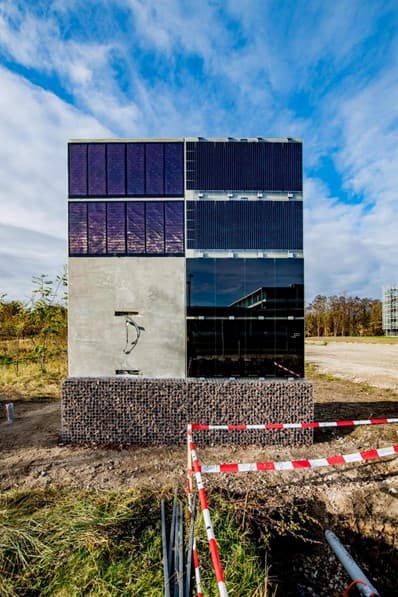
Construction in progress of a test setup of a PV-enhanced sound barrier for highways at the EnergyVille premises. ©EnergyVille
Finding all of these technologies in large numbers on our cars or our roofs is another question. Bart Vermang: “The first reported solar cell ever was created in 1883, and it was a Selenium PV cell, be it with an efficiency of barely one percent. It went from an idea to a working system on a rooftop in New York City in less than one year. Those are ambitions we can no longer have. But suppose you look at the progress that’s already been made and the actual implementations and products that already exist in, for example, BIPV and VIPV. In that case, there is no doubt thin-film PV technologies will become more important for our sustainable energy future.”
Further reading:
- This item is an addition to the main article: “Imo-imomec: hidden gem in materials R&D and related services”
Want to know more?
- PERCISTAND: Development of all thin-film PERovskite on CIS TANDem photovoltaics | EnergyVille
- Sound barriers with integrated solar panels demonstrate their energy potential | EnergyVille
- Six new projects launched in the framework of the Energy Transition Fund | EnergyVille
- Flanders invests 7.5 million euros in new research infrastructure in Limburg - Thor park

Bart Vermang received his M.Sc. degree in physics from the University of Ghent and a Ph.D. degree in electrical engineering from the University of Leuven, both in Belgium. He performed his M.Sc. final research project at the Norwegian University of Science and Technology (NTNU), where his interest in renewable energy was triggered. After that, he obtained a Ph.D. for research in silicon photovoltaics (PV) at Imec - Belgium, followed by two personal Postdoctoral fellowships to work on thin-film PV. A Marie Skłodowska-Curie individual fellowship moved him to the University of Uppsala in Sweden, and a fellowship from the Flemish Research Foundation (FWO) returned him to imec. In 2016, Bart acquired a European Research Council (ERC) starting grant and became a professor at Hasselt University in Belgium. Currently, he is also coordinating Horizon 2020 project PERCISTAND, with a consortium of 13 international partners and a budget of 5 million EUR. Bart is a member of the Operational Board of EnergyVille, the Belgian Energy Research Alliance (BERA) board, the editorial board of the Solar Energy Materials & Solar Cells journal (Elsevier), and the Young Academy of Flanders.
Published on:
28 August 2021


